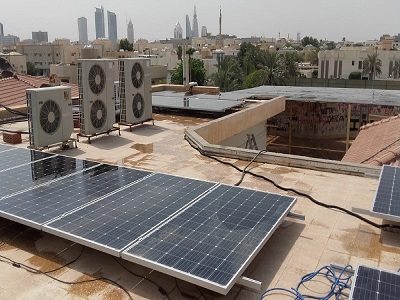100kw solar power plant cost: economical investment in sustainable energy
 Xianghong
Xianghong  August 16,2024
August 16,2024
With the growing global demand for renewable energy, solar power plants are becoming more and more popular as a sustainable power generation solution. In this article, we'll explore the costs involved in building a 100kw solar plant and explain why it's a financially rewarding investment.
The cost of building a 100kw solar power station mainly includes the following aspects:
Solar Panels: Solar panels are the core component of a solar power plant and are responsible for converting solar energy into electricity. Depending on factors such as brand, model, and quality, the number and cost of panels required for a 100kw solar power plant will vary.
Inverters and battery energy storage systems: Inverters convert the direct current generated by solar panels into alternating current for use on the grid or for storage in batteries. The cost of inverters and battery storage systems depends on capacity and technical specifications.

Installation and Construction Costs: Building a solar power plant requires a professional installation and construction team who are responsible for installing the solar panels, inverters, battery energy storage system, and associated electrical equipment. Installation and construction costs include labor, equipment and materials.
Grid connection fee: Connecting a solar plant to the grid requires payment of a certain access fee, which includes signing an agreement with the grid operator, installing electricity meters and monitoring equipment, etc.
The cost of a 100kw solar power plant is also affected by factors such as geographical location, land lease, and government subsidies. Fees vary greatly in different regions, so detailed market research and cost analysis are required when making investment decisions.
Although the construction of a 100kw solar power plant requires a certain initial investment, it also brings considerable economic returns and long-term benefits. Here are some reasons:
Saving energy costs: Solar power plants can use solar energy to generate electricity at zero cost, reducing dependence on traditional energy sources, thereby reducing energy costs. Over time, the ROI of a solar power plant will gradually increase.
Revenue from sale of electricity: The electricity generated by a solar plant can be sold to grid operators or other users, creating an additional revenue stream. According to local policies and market demand, the income from selling electricity can become an important source of income for solar power plants.
Government subsidies and incentives: Many countries and regions offer subsidies and incentives for solar power generation to encourage the use of renewable energy. These government policies can help reduce the cost of building and operating solar farms.

Environmental benefits: The construction and operation of solar power plants do not produce greenhouse gas emissions such as carbon dioxide, which is environmentally friendly. By choosing solar power plants, companies and individuals can fulfill their environmental responsibility and enhance their brand image.
The cost of a 100kw solar power plant is an economical option worth investing in. Not only will it save you energy costs, but it will also create an income stream and have a positive impact on the environment. With proper planning and strategies, solar power plants will become an important part of sustainable development in the future.














